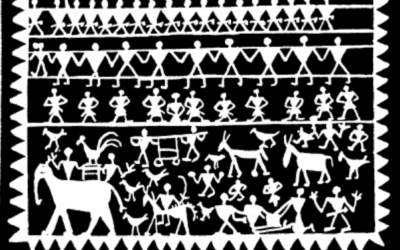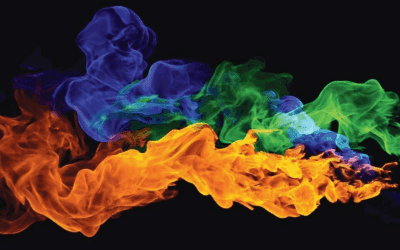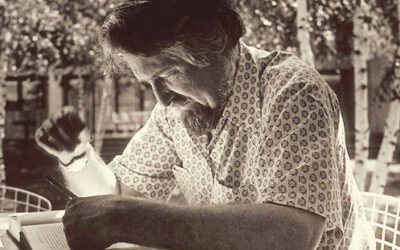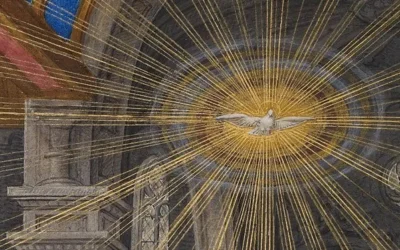Who is Lionel Corbett?

Lionel Corbett (1945-) is a prominent Jungian analyst, professor, and author whose innovative theories on the relationship between psychology, spirituality, and the sacred have made significant contributions to the fields of depth psychology, transpersonal psychology, and psychology of religion. Over a prolific career spanning several decades, Corbett has developed a rich body of concepts and methods for understanding the role of numinous, spiritual and religious experiences in psychological development and well-being. Central to his work is the idea that spirituality is a fundamental dimension of the psyche that cannot be reduced to psychological concepts alone, but must be engaged with on its own terms. By taking seriously the ontological reality of the sacred as it appears in dreams, visions, and religious experiences, Corbett offers a expanded vision of depth psychology that bridges the traditional boundaries between psychology, religion, and spirituality.
Corbett’s scholarly journey began with his early work integrating Jungian psychology with object relations theory and self psychology. He was interested in how the self develops through relationships with significant others, both external and internal. This led to his key concept of the “religious function of the psyche” – the innate human capacity for numinous experience and relationship with a transpersonal Other. For Corbett, this religious function is a universal feature of the psyche that manifests in different ways across cultures and spiritual traditions. It plays a crucial role in the development of a coherent, meaningful sense of self and in the lifelong journey of individuation and self-realization.
In his influential books The Religious Function of the Psyche (1996) and The Sacred Cauldron (2011), Corbett explores the nature of this religious function and its role in psychological development and healing. Drawing on a wide range of sources – from the world’s spiritual traditions to the findings of neuroscience and infant research – Corbett shows how experiences of the numinous shape the self from the earliest moments of life. He describes how the infant’s experience of the mother as a powerful, numinous Other forms a template for later experiences of the sacred, both in personal spirituality and in organized religion. He also shows how unresolved traumas and conflicts in these early numinous relationships can lead to spiritual struggles and crises later in life.
For Corbett, engaging with the reality of the sacred is essential for psychological wholeness and well-being. He critiques reductionist approaches that attempt to explain away spiritual experiences in purely psychological terms, arguing that this cuts us off from a vital source of meaning and transformation. At the same time, he acknowledges the potential dangers of uncritical immersion in the numinous, which can sometimes overwhelm the ego and lead to psychosis or spiritual inflation. The task of depth psychotherapy, in his view, is to help individuals develop a mature, discerning relationship with the sacred that honors its transpersonal reality while also maintaining healthy ego boundaries.
Throughout his work, Corbett emphasizes the transformative power of the numinous in human life. He shows how encounters with the sacred – whether through dreams, visions, religious rituals, or spontaneous experiences of awe and wonder – can catalyze profound processes of psychological growth and change. He describes how symbols and images from the world’s mythologies and wisdom traditions can serve as “psychopomps” or guides in the journey of individuation, helping us to navigate the challenges of the inner world. At the same time, he stresses that genuine transformation requires active engagement and struggle, as we grapple with the sometimes terrifying and overwhelming forces of the unconscious.
One of Corbett’s key contributions is his integration of spiritual experience with the findings of contemporary neuroscience and developmental psychology. He draws on research showing how the brain is wired for numinous experience from birth, with innate capacities for awe, wonder, and self-transcendence. He also explores how early experiences of attunement and misattunement with caregivers shape the developing brain and lay the foundation for later experiences of the sacred. This allows him to ground the often esoteric insights of depth psychology in the concrete realities of embodied human development.
At the same time, Corbett is careful not to reduce the sacred to mere brain chemistry or attachment dynamics. He insists on the ontological reality of the numinous as a transpersonal dimension of experience that cannot be fully captured in psychological or scientific concepts. This ontological realism sets him apart from many other contemporary theorists who view religious experiences primarily as projections or constructions of the human mind. For Corbett, the sacred is an irreducible reality that demands our respect and engagement, even as we seek to understand its workings in psychological terms.
Another key theme in Corbett’s work is the relationship between personal spirituality and organized religion. He acknowledges the important role that religious traditions can play in providing structures of meaning, ritual, and community that support psychological development. At the same time, he critiques the ways in which religions can sometimes subordinate individual experience to dogma and authority, or become vehicles for oppression and abuse. He argues for a mature spirituality that honors the wisdom of the traditions while also cultivating a direct, personal relationship with the numinous.
Corbett’s approach to spirituality is deeply informed by his practice as a Jungian analyst and psychotherapist. He views the therapeutic relationship as a sacred space in which the numinous can be evoked and worked with in the service of healing and individuation. He emphasizes the importance of attending to the symbolic and imaginal dimensions of experience, as expressed in dreams, fantasies, and creative work. He also stresses the need for the therapist to cultivate a respectful, empathetic stance towards the client’s spiritual experiences, even when they may differ from the therapist’s own beliefs or assumptions.
In addition to his theoretical contributions, Corbett has also been a pioneer in the practical application of depth psychology to spiritual direction and pastoral counseling. He has developed a model of “depth spiritual direction” that integrates Jungian psychology with the insights of the spiritual traditions to support individuals in their spiritual growth and development. This approach emphasizes the importance of working with dreams, images, and symbols as a way of accessing the guidance of the unconscious and the sacred. It also stresses the need for spiritual directors to cultivate their own psychological and spiritual maturity in order to be effective guides for others.
Corbett’s integrative vision of psychology and spirituality has had a significant impact on the field of depth psychology and beyond. His work has helped to bridge the often contentious divide between psychology and religion, showing how a depth psychological approach can enrich and deepen our understanding of spiritual experience. He has also challenged the reductionist tendencies of much contemporary psychology, arguing for the ontological reality of the sacred and the need for a more expanded, transpersonal vision of the psyche.
At the same time, Corbett’s work has important implications for the practice of psychotherapy and spiritual direction. By attending to the numinous dimensions of experience and the symbolic language of the unconscious, therapists and spiritual directors can help individuals to access the transformative power of the sacred in their lives. This requires a willingness to engage with the mystery and complexity of the psyche, and to honor the unique spiritual journey of each individual.
Corbett’s ideas have also had a significant influence on the emerging field of transpersonal psychology, which seeks to integrate insights from the world’s spiritual traditions with the findings of modern psychology. His concept of the religious function of the psyche has provided a theoretical foundation for understanding the universality of spiritual experience and its role in human development. At the same time, his emphasis on the ontological reality of the sacred has challenged the tendency of some transpersonal theorists to reduce spirituality to mere psychological states or constructs.
In recent years, Corbett has continued to explore the implications of his work for a wide range of contemporary issues, from the ecological crisis to the challenges of globalization and cultural diversity. He has argued that a depth psychological approach to spirituality can help us to develop a more integrated, holistic vision of the world that honors the sacredness of all life. This requires a willingness to confront the shadow dimensions of our individual and collective psyches, and to work towards greater compassion, justice, and sustainability.
Corbett’s legacy is a powerful reminder of the transformative potential of the sacred in human life. By taking seriously the numinous dimensions of experience and the symbolic language of the psyche, he offers a vision of psychology that is both deeply personal and profoundly transpersonal. His work challenges us to cultivate a more direct, authentic relationship with the sacred, and to honor the unique spiritual journey of each individual. At the same time, it invites us to recognize the ways in which our personal struggles and transformations are intimately connected to the larger struggles and transformations of our world. As we grapple with the challenges of the 21st century, Corbett’s integrative vision of psychology and spirituality offers a hopeful path forward, one that honors the depth and complexity of the human psyche while also recognizing our fundamental interconnectedness with all of life.
The Religious Function of the Psyche
One of Corbett’s most significant contributions to depth psychology is his concept of the “religious function of the psyche.” Drawing on the work of Carl Jung and other depth psychologists, Corbett argues that the psyche has an innate capacity for numinous experience and relationship with a transpersonal Other. This religious function is not a byproduct of culture or conditioning, but a fundamental structure of the psyche itself, one that manifests in different ways across cultures and spiritual traditions.
For Corbett, the religious function plays a crucial role in the development of a coherent, meaningful sense of self. From the earliest moments of life, the infant experiences the mother as a powerful, numinous Other, one that evokes feelings of awe, wonder, and terror. This early numinous relationship forms a template for later experiences of the sacred, both in personal spirituality and in organized religion. As the child grows and develops, the religious function continues to shape their sense of self and world, evoking experiences of transcendence, mystery, and meaning that cannot be reduced to mere psychological concepts.
Corbett emphasizes that the religious function is not a matter of belief or doctrine, but a lived experience of the numinous that arises spontaneously from the depths of the psyche. This experience can take many forms, from the ecstatic visions of mystics and shamans to the quiet sense of awe and reverence evoked by nature or art. What unites these diverse experiences is their capacity to evoke a sense of something greater than the individual self, something that demands our attention and engagement.
At the same time, Corbett acknowledges that the religious function can also be a source of great suffering and struggle. When early numinous relationships are marked by trauma, neglect, or abuse, the individual may develop a distorted or conflicted relationship with the sacred. This can manifest in a range of psychological and spiritual problems, from anxiety and depression to religious fanaticism and spiritual bypassing. The task of depth psychotherapy, in Corbett’s view, is to help individuals heal these early wounds and develop a more mature, integrated relationship with the numinous.
Corbett’s concept of the religious function has important implications for the study of religion and spirituality. It suggests that the capacity for numinous experience is not a cultural construct or a byproduct of belief, but a fundamental structure of the psyche that shapes our sense of self and world from the earliest moments of life. This challenges reductionist approaches that seek to explain away religion as a mere projection of human needs and desires. At the same time, it highlights the importance of attending to the psychological dimensions of spiritual experience, and the ways in which early relationships and traumas can shape our relationship with the sacred.
The Numinous in Dreams and Visions
Another key theme in Corbett’s work is the role of dreams and visions in the experience of the numinous. Drawing on the depth psychological tradition, Corbett argues that dreams and visions are not merely random neural events or psychological projections, but meaningful encounters with the transpersonal dimensions of the psyche. They offer a direct, unmediated experience of the sacred that can be profoundly transformative.
For Corbett, working with dreams and visions is central to the practice of depth psychotherapy and spiritual direction. By attending to the symbolic and imaginal dimensions of these experiences, therapists and spiritual directors can help individuals to access the wisdom and guidance of the unconscious. This requires a willingness to engage with the often complex and enigmatic language of symbols, and to trust in the inherent meaning and intelligence of the psyche.
Corbett emphasizes that the numinous quality of dreams and visions often evokes a sense of awe, mystery, and terror. This is because they confront us with the reality of something greater than ourselves, something that challenges our ordinary assumptions and ways of being. At the same time, they can also evoke feelings of profound beauty, joy, and connection, as we glimpse the underlying unity and sacredness of all life.
In his book The Sacred Cauldron, Corbett explores the role of dreams and visions in the spiritual traditions of the world. He shows how these experiences have been central to the lives of mystics, prophets, and shamans throughout history, and how they continue to shape the spiritual lives of individuals today. He also highlights the ways in which dreams and visions can serve as guides and initiators in the journey of individuation, helping us to confront the shadow dimensions of the psyche and to integrate the disparate parts of ourselves.
Corbett’s emphasis on the numinous quality of dreams and visions has important implications for the practice of psychotherapy and spiritual direction. It suggests that these experiences are not merely psychological phenomena to be analyzed and interpreted, but meaningful encounters with the transpersonal dimensions of reality. This requires a willingness to engage with the mystery and complexity of the psyche, and to trust in the inherent wisdom and intelligence of the unconscious.
At the same time, Corbett acknowledges the potential dangers of uncritical immersion in the numinous. He emphasizes the importance of maintaining healthy ego boundaries and discernment, even as we open ourselves to the transformative power of these experiences. This requires a mature, integrated relationship with the sacred that honors its reality while also respecting the limitations and vulnerabilities of the human psyche.
The Shadow and the Sacred
Another central theme in Corbett’s work is the relationship between the sacred and the shadow dimensions of the psyche. Drawing on the Jungian concept of the shadow, Corbett argues that our relationship with the numinous is always shaped by the unconscious, repressed aspects of ourselves that we seek to avoid or deny. These shadow dimensions can manifest in a range of psychological and spiritual problems, from anxiety and depression to religious fanaticism and abuse.
For Corbett, confronting and integrating the shadow is essential for psychological and spiritual wholeness. This requires a willingness to face the painful, shameful, and frightening aspects of ourselves that we have long sought to avoid. It also requires a recognition that the shadow is not merely a personal problem to be overcome, but a transpersonal reality that connects us to the larger dimensions of the psyche and the world.
In his book The Religious Function of the Psyche, Corbett explores the ways in which the shadow can manifest in religious and spiritual experiences. He shows how the numinous can sometimes be experienced as a terrifying or overwhelming force, one that threatens to shatter the ego and plunge us into chaos and darkness. This can lead to a range of defensive reactions, from spiritual bypassing and denial to religious fundamentalism and violence.
At the same time, Corbett emphasizes that the shadow is also a source of great creativity and transformation. By confronting and integrating the repressed aspects of ourselves, we can access new sources of energy, insight, and wisdom. This requires a willingness to embrace the complexity and ambiguity of the psyche, and to recognize that the path to wholeness often leads through the darkness.
Corbett’s approach to the shadow has important implications for the practice of psychotherapy and spiritual direction. It suggests that the goal of these practices is not merely to alleviate symptoms or promote well-being, but to facilitate a deeper encounter with the numinous dimensions of the psyche. This requires a willingness to confront the shadow and to engage with the often painful and challenging aspects of the inner world.
At the same time, Corbett emphasizes the importance of compassion and empathy in this process. He argues that the shadow is not something to be feared or rejected, but a vital part of our humanity that deserves our respect and attention. By approaching the shadow with curiosity, openness, and love, we can begin to heal the wounds of the past and to develop a more integrated, authentic sense of self.
Depth Psychology and Spiritual Direction
One of the most significant contributions of Corbett’s work is his integration of depth psychology with the practice of spiritual direction. Drawing on his experience as a Jungian analyst and spiritual director, Corbett has developed a model of “depth spiritual direction” that seeks to support individuals in their spiritual growth and development.
Central to this model is the idea that spiritual direction is not merely a matter of guidance or advice, but a deep encounter with the numinous dimensions of the psyche. For Corbett, the role of the spiritual director is to create a safe, sacred space in which individuals can explore their inner world and connect with the transpersonal realities that shape their lives.
This requires a willingness to engage with the symbolic and imaginal dimensions of experience, as expressed in dreams, visions, and other numinous encounters. It also requires a deep respect for the unique spiritual journey of each individual, and a recognition that the path to wholeness often leads through the shadow and the darkness.
Corbett’s approach to spiritual direction is deeply informed by his Jungian training and his understanding of the depth psychological tradition. He emphasizes the importance of attending to the psychological dimensions of spiritual experience, and the ways in which early relationships and traumas can shape our relationship with the sacred. At the same time, he insists on the ontological reality of the numinous, and the need for a direct, unmediated encounter with the transpersonal dimensions of the psyche.
One of the key practices in Corbett’s model of depth spiritual direction is the use of dreams and active imagination. By working with the symbolic and imaginal language of the unconscious, individuals can access the wisdom and guidance of the psyche and deepen their relationship with the sacred. This requires a willingness to engage with the often enigmatic and challenging aspects of the inner world, and to trust in the inherent meaning and intelligence of the psyche.
Corbett also emphasizes the importance of embodiment and somatic experience in spiritual direction. He argues that the body is not merely a vessel for the soul, but a vital source of wisdom and transformation in its own right. By attending to the sensations, feelings, and intuitions of the body, individuals can access a deeper, more integrated experience of the sacred.
In addition to his theoretical contributions, Corbett has also been a pioneer in the practical application of depth psychology to spiritual direction. He has trained countless spiritual directors in his model of depth spiritual direction, and has helped to establish the field as a vital area of study and practice.
Corbett’s approach to spiritual direction has important implications for the wider field of depth psychology and spirituality. It suggests that the goal of these practices is not merely to promote psychological health or well-being, but to facilitate a deeper encounter with the numinous dimensions of reality. This requires a willingness to engage with the mystery and complexity of the psyche, and to honor the unique spiritual journey of each individual.
Critique and Controversies
While Corbett’s work has been widely influential in the fields of depth psychology and spirituality, it has also been the subject of some critique and controversy. One of the main criticisms of his approach is that it can sometimes prioritize individual experience over the wisdom and authority of religious traditions. Some critics argue that this can lead to a kind of spiritual narcissism or relativism, in which personal experience becomes the ultimate arbiter of truth.
Corbett has responded to these criticisms by emphasizing the importance of discernment and humility in spiritual practice. He argues that while personal experience is a vital source of wisdom and transformation, it must always be balanced with a deep respect for the accumulated wisdom of the traditions. He also stresses the importance of community and accountability in spiritual practice, and the need for individuals to submit their experiences to the guidance and discernment of others.
Another critique of Corbett’s work is that it can sometimes prioritize the psychological dimensions of spiritual experience over the theological or metaphysical. Some critics argue that this can lead to a kind of reductionism, in which the ultimate reality of the sacred is reduced to mere psychological phenomena.
Corbett has responded to these criticisms by insisting on the ontological reality of the numinous, and the need for a direct, unmediated encounter with the transpersonal dimensions of the psyche. He argues that while psychology can provide important insights into the nature of spiritual experience, it cannot fully capture the ultimate mystery and transcendence of the sacred.
Despite these criticisms, Corbett’s work remains a vital and influential force in the fields of depth psychology and spirituality. His integrative approach has helped to bridge the often-contentious divide between psychology and religion, and has opened up new possibilities for understanding the nature of spiritual experience.
Legacy and Influence
Lionel Corbett’s work represents a significant contribution to the fields of depth psychology, spirituality, and the psychology of religion. His integrative approach, which draws on the insights of Jungian psychology, object relations theory, and the world’s spiritual traditions, offers a powerful framework for understanding the role of the sacred in human life.
Central to Corbett’s work is his concept of the religious function of the psyche, which highlights the innate human capacity for numinous experience and relationship with a transpersonal Other. This concept challenges reductionist approaches to religion and spirituality, and emphasizes the ontological reality of the sacred as it appears in dreams, visions, and other numinous encounters.
Corbett’s approach also emphasizes the importance of confronting and integrating the shadow dimensions of the psyche, and the need for a mature, discerning relationship with the numinous. He argues that genuine spiritual transformation requires a willingness to engage with the complexity and ambiguity of the inner world, and to embrace the often-painful process of growth and individuation.
Anthropology
Books by Lionel Corbett:
- The Religious Function of the Psyche (1996) – Explores the intersection of psychology and spirituality.
- Psyche and the Sacred: Spirituality Beyond Religion (2012) – Discusses the role of the sacred in psychological development.
- The Sacred Cauldron: Psychotherapy as a Spiritual Practice (1996) – Integrates spiritual experiences into therapeutic practice.
- Spiritual Psychology: The Twelve Primary Life Lessons (2012) – Offers insights into spiritual growth and psychological well-being.
Further Reading:
- Jungian Psychology and Spirituality:
- Jung’s Map of the Soul: An Introduction by Murray Stein (1998)
- Inner Work: Using Dreams and Active Imagination for Personal Growth by Robert A. Johnson (1986)
- Transpersonal Psychology and Mystical Experience:
- The Varieties of Religious Experience by William James (1902)
- Transpersonal Psychology: Exploring the Farther Reaches of Human Nature by Roger Walsh and Frances Vaughan (1993)
- Psychology of Religion and Spirituality:
- The Psychology of Religion: An Empirical Approach by Ralph W. Hood Jr. et al. (2009)
- The Oxford Handbook of Psychology and Spirituality edited by Lisa J. Miller (2012)
Web Resources:
- Lionel Corbett’s official website or professional profiles for articles, lectures, and updates on his work.
- International Association for Jungian Studies (IAJS) – Provides resources and publications related to Jungian psychology and its applications.
Jungian Topics
How Psychotherapy Lost its Way
Therapy, Mysticism and Spirituality?
The Symbolism of the Bollingen Stone
What Can the Origins of Religion Teach us about Psychology
The Major Influences from Philosophy and Religions on Carl Jung
How to Understand Carl Jung
How to Use Jungian Psychology for Screenwriting and Writing Fiction
The Symbolism of Color in Dreams
How the Shadow Shows up in Dreams
Using Jung to Combat Addiction
Jungian Exercises from Greek Myth
Jungian Shadow Work Meditation
Free Shadow Work Group Exercise
Post Post-Moderninsm and Post Secular Sacred
The Origins and History of Consciousness
Jung’s Empirical Phenomenological Method
The Future of Jungian Thought
Jungian Analysts
Anthropology


























0 Comments